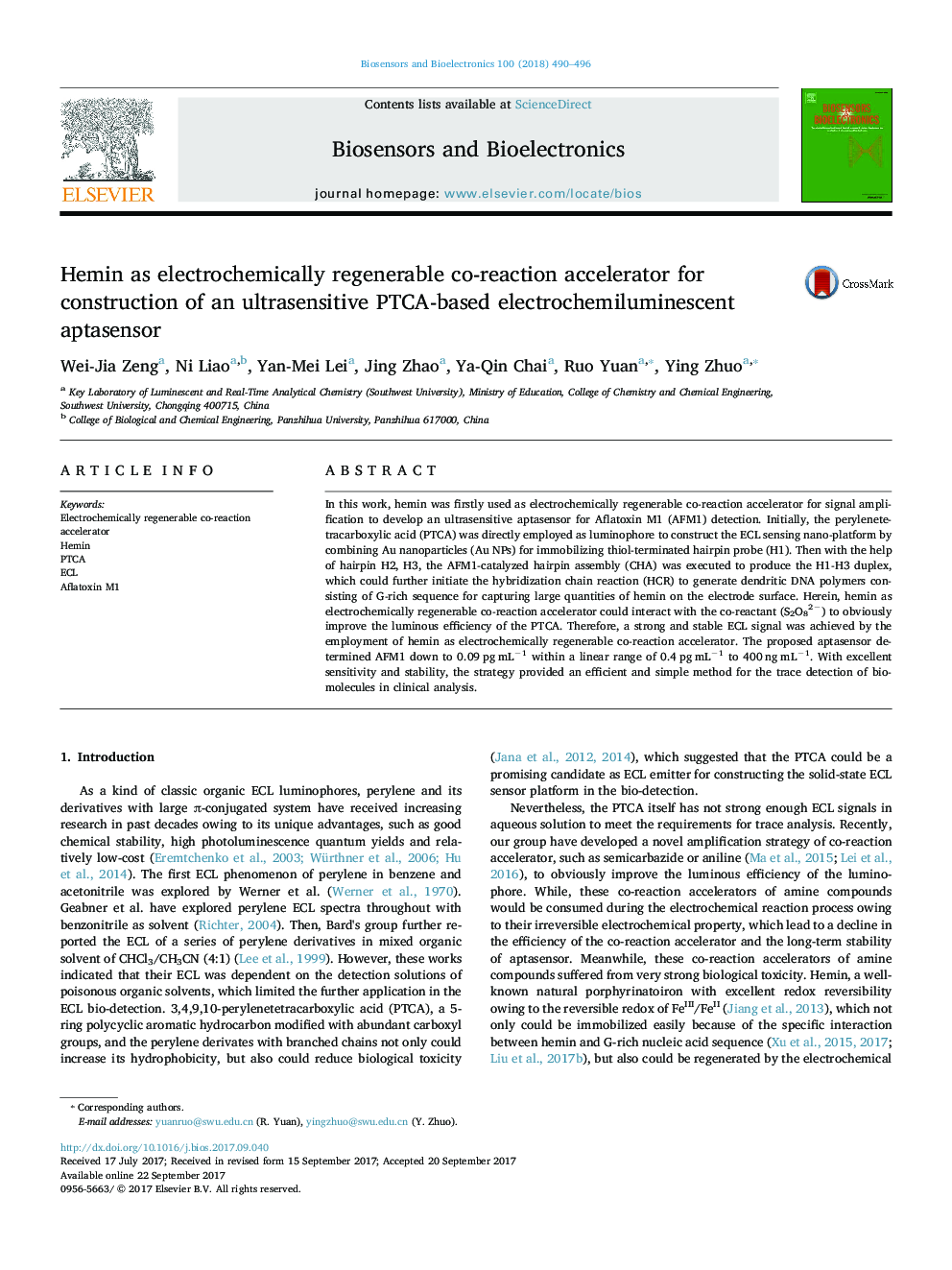| Article ID | Journal | Published Year | Pages | File Type |
|---|---|---|---|---|
| 5030814 | Biosensors and Bioelectronics | 2018 | 7 Pages |
Abstract
In this work, hemin was firstly used as electrochemically regenerable co-reaction accelerator for signal amplification to develop an ultrasensitive aptasensor for Aflatoxin M1 (AFM1) detection. Initially, the perylenetetracarboxylic acid (PTCA) was directly employed as luminophore to construct the ECL sensing nano-platform by combining Au nanoparticles (Au NPs) for immobilizing thiol-terminated hairpin probe (H1). Then with the help of hairpin H2, H3, the AFM1-catalyzed hairpin assembly (CHA) was executed to produce the H1-H3 duplex, which could further initiate the hybridization chain reaction (HCR) to generate dendritic DNA polymers consisting of G-rich sequence for capturing large quantities of hemin on the electrode surface. Herein, hemin as electrochemically regenerable co-reaction accelerator could interact with the co-reactant (S2O82â) to obviously improve the luminous efficiency of the PTCA. Therefore, a strong and stable ECL signal was achieved by the employment of hemin as electrochemically regenerable co-reaction accelerator. The proposed aptasensor determined AFM1 down to 0.09 pg mLâ1 within a linear range of 0.4 pg mLâ1 to 400 ng mLâ1. With excellent sensitivity and stability, the strategy provided an efficient and simple method for the trace detection of biomolecules in clinical analysis.
Keywords
Related Topics
Physical Sciences and Engineering
Chemistry
Analytical Chemistry
Authors
Wei-Jia Zeng, Ni Liao, Yan-Mei Lei, Jing Zhao, Ya-Qin Chai, Ruo Yuan, Ying Zhuo,
